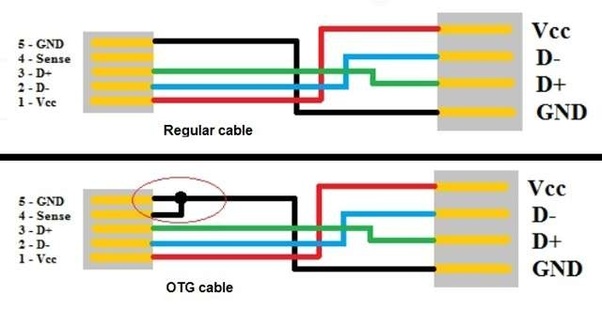I tried to make a micro USB to USB-C adapter by making the connections shown with red lines below (so 11 of the 24 USB-C pins are used and other pins float). This is the view looking into the USB-C plug (as if you are the matched USB-C receptacle) and the 4 connections at the top connect to the GND, VBUS, D-, and D+ on the micro-USB receptacle (ID floats).
My USB-C phone then charges, but unfortunately does not notice when a keyboard gets connected to the micro USB (through a normal OTG hub with charging). For me, the spec isn't clear about data because it focuses more on power delivery...should I really not get data with this setup? If not, can I add an "Ra" resistor on VCONN (or some other pin) to get data? Sorry if I'm the only one who can't read the spec well, but I'm just trying to find the cheapest way to charge and use a keyboard simultaneously.
(For the record, adding a 5kohm resistor from CC1 to GND makes the micro USB keyboard work, but then I cannot simultaneously charge the phone.)



